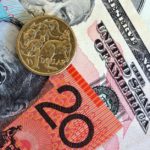Gold gained on Friday, but is headed for a third monthly decline after overall upbeat data from the U.S. reinforced speculations for an earlier-than-expected reduction in Feds monetary stimulus. Assets in the SPDR Gold Trust, the biggest bullion-backed ETF, remained at the lowest since January 2009, adding to bearish sentiment. However, strong Chinese physical demand and a weaker dollar supported the market.
On the Comex division of the New York Mercantile Exchange, gold futures for settlement in February rose to $1 246.50 per troy ounce by 9:54 GMT, gaining 0.69% on a daily basis. Prices held in range between day’s high of $1 240.40 and a low of $1 249.30 an ounce. The metal is up 0.3% on weekly basis.
Gold is heading towards a third consecutive month of losses and the worst performance since June, having declined by 5.8% so far. Gold has lost 26 percent this year as an improved US economy outlook fueled speculations for an earlier-than-expected cut in Feds massive $85-billion-per-month asset purchasing program.
The majority of respondents in a Bloomberg News survey remained bearish for a second week as eighteen analysts expected prices to fall next week, while nine were bullish and three neutral.
Trade volumes were light on Thursday, with Comex floor trading scheduled to remain closed for Thanksgiving. An abbreviated session was set on Friday.
Gold was pressured earlier in the week following overall upbeat data from the U.S., despite some points of weakness.
On Wednesday, the Labor Department reported that the number of Americans who filed for initial unemployment benefits fell by 10 000 to a two-month low of 316 000 in the week ended November 23, defying analysts’ projections for an increase to 330 000. Applications for the previous week were revised up by 3 000 after being initially estimated at 323 000.
The number of people who continued to receive unemployment benefits slid by 91 000 to 2.776 million, the lowest since January 2008, sharply outperforming analysts’ expectations for a 14 000 drop. Those Americans who have exhausted traditional state help and are receiving extended benefits under federal programs rose by 3 400 to 1.31 million in the week ended November 9.
However, also on Wednesday, the Commerce Department reported that orders for U.S. durable goods fell in October, coinciding with recent reports which suggested confidence in the U.S. was hurt last month by the 16-day government shutdown. Bookings for goods set to last at least three years fell by 2.0% in October as demand for civilian and defense aircraft plunged, marking a major retreat from September’s upward-revised 4.1% advance. Analysts expected a 1.9% contraction.
The Federal Reserve revealed last week that it might be trimming the record-high stimulus “in the coming months”, if the economic recovery starts moving in the right direction. Fed minutes showed that policy makers “generally expected that the data would prove consistent with the committee’s outlook for ongoing improvement in labor market conditions and would thus warrant trimming the pace of purchases in coming months.”
A weaker dollar also eased pressure on the metal. The U.S. dollar index, which measures the greenback’s performance against a basket of six major peers, traded at 80.56 at 9:56 GMT, down 0.08% on the day. The index varied between day’s high and session low of 80.63 and 80.52 and is down nearly 0.2% on weekly basis. Weakening of the dollar makes commodities priced in it cheaper for foreign currency holders and boosts their appeal as an alternative investment.
Assets in the SPDR Gold Trust, the biggest bullion-backed ETF, remained unchanged for a second day at 843.21 tons on Thursday, the lowest since January 2009. Outflows have totaled nearly 464 tons this year. Billionaire hedge-fund manager John Paulson who holds the biggest stake in the SPDR Gold Trust told clients on November 20 that he wouldn’t invest more money in his gold fund because it isn’t clear when inflation will accelerate. US inflation is still well below the Fed target of 2.00%.
China demand
However, the yellow metal continued to draw support by increased demand from China, the world’s second largest consumer. Gold shipments to China from Hong Kong rose in October as jewelers and retailers rebuilt inventories with the peak-gold demand season of the year coming closer.
According to calculations by Bloomberg based on data from the Hong Kong Census and Statistics Department, net imports, after deducting flows from China into Hong Kong rose to 129.9 metric tons in October, compared to 109.4 metric tons a month ago. The data also showed that purchases reached an all-time high of 130 tons in March and the amount for the first 10 months of 2013 surged to 955.9 tons, more than double from a year earlier.
China is poised to overtake India as number one consumer of bullion by the end of the year, with demand set to reach 1 000 tons, according to estimates by the World Gold Council.





